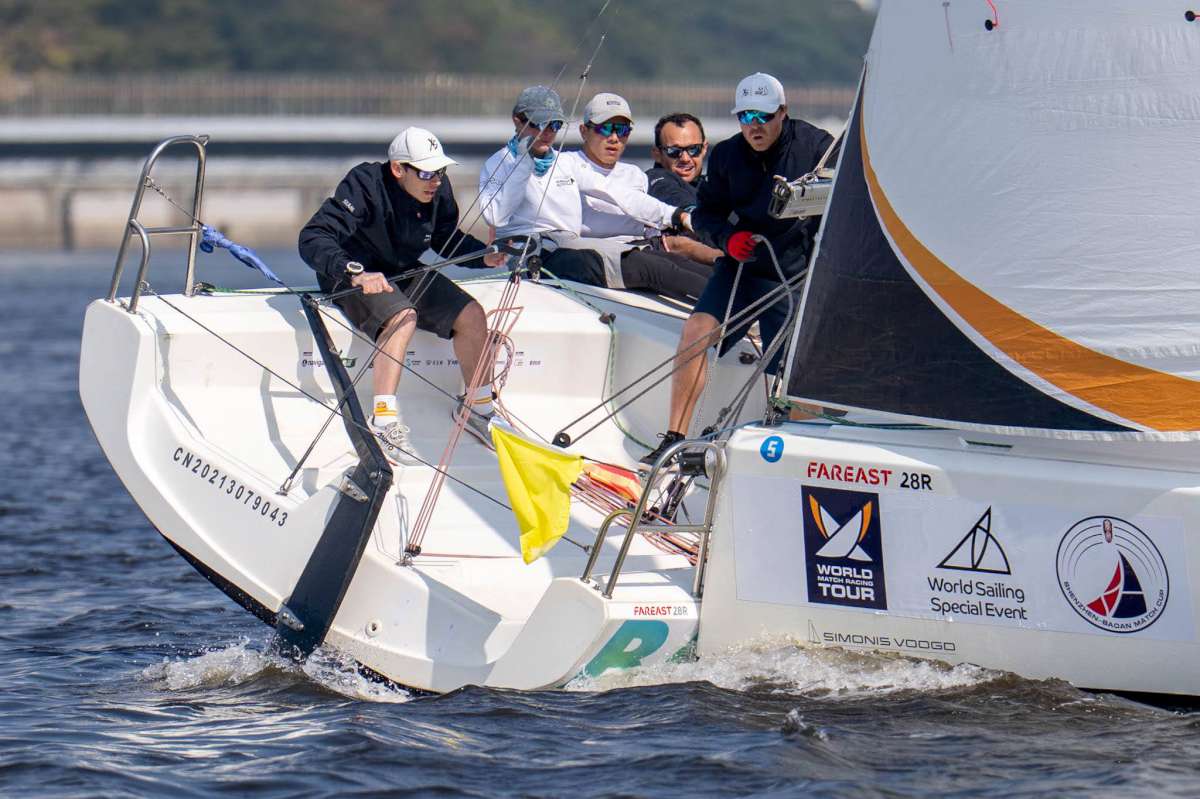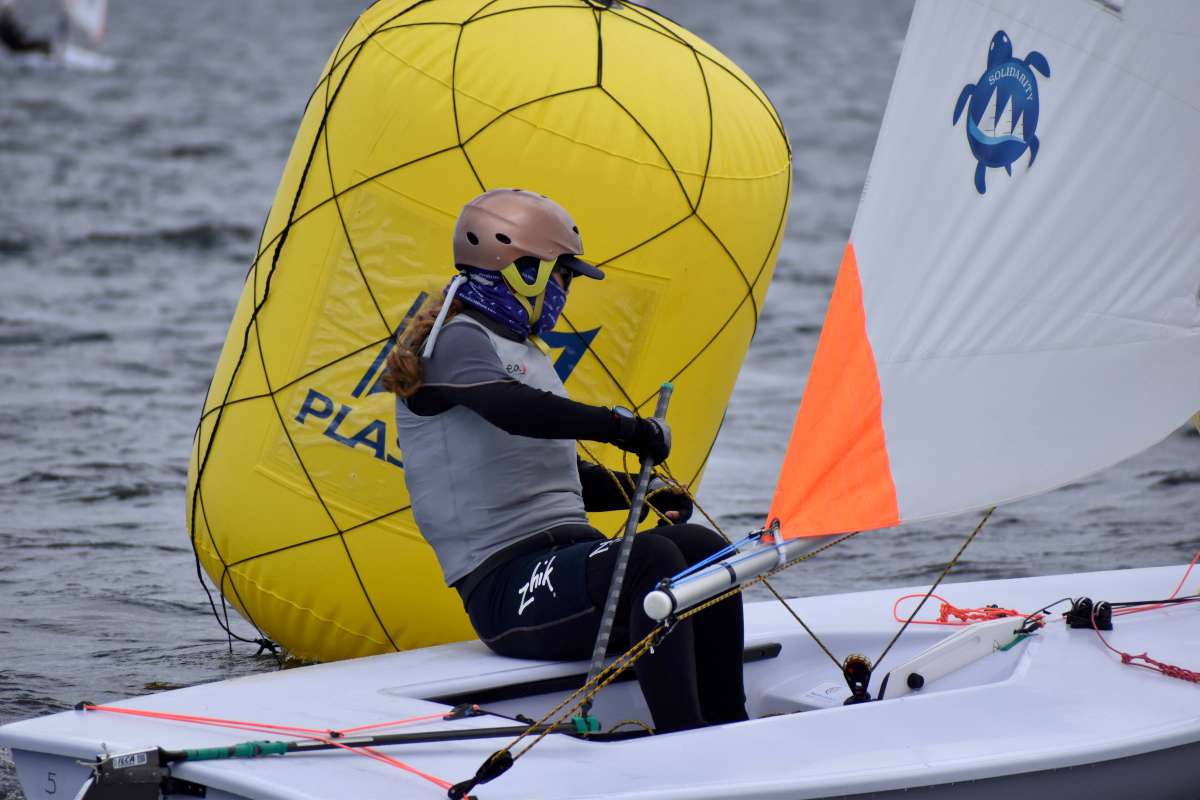Money a little tight in the current economic climate? Caroline Strainig checks out a trailer-sailer new to Australia that will get you on the water without stretching your bank balance to breaking point.
“Cruising is a state of mind.”
I don’t like starting articles with a quote because it’s overdone, but in this case it is justified. This boat really epitomises what cruising is all about as far as I am concerned: getting on the water and pottering around enjoying yourself, regardless of whether you are a multimillionaire in a $1m yacht or a pensioner in tired old Heron. When you’re out there, being on the water and enjoying the surrounding environment is all that matters. Sure, it’s nice to do it in luxury, but you can still have a lot of fun in a boat that didn’t cost the earth.
The Potter 19 is at the bottom end of new yachts price-wise, with the test boat costing $45,000, a far cry from most of the boats that we feature in this column. It’s not that we want to feature just more expensive boats, but new what we call “entry-level” boats are few and far between. The cost of tooling up for a production run in this country is prohibitive and the returns relatively small because there are simply not the numbers of buyers here. Importers also tend to give them the cold shoulder because the effort involved in importing a smaller boat is the same as a larger boat and the profit relatively tiny.
The WWP19
Okay, so now I’ve set the scene, let’s get to the subject of this story, the West Wight Potter 19, to give this little US-built boat her full name. The Potter 19 is new to Australia but anything but new as far as her homeland is concerned. Her sister ship, the West Wight Potter 15, dates back to 1949 and the WWP19 was first launched in 1971. Both have been constantly updated and improved since their inception, but the basic shape and premise have remained the same: safe, stable, fun boats. International Marine describes the 19 as: “The small cruiser with an incredible history of tradition and accomplishment”. Potter owners have sailed their boats up and down the west coast of the US, across the Baltic Sea and from California to Hawaii.
Australian distributor Gold Coast-based Australian distributor Cameron Suter fell in love with the Potters when he came across them on the web, and having imported some MacGregor power-sailers with success from the US thought there might well be a niche for them here. He shipped two of them over, and one has already sold, with keen interest in the second, which Cameron would like to keep until at least after the Sanctuary Cove International Boat Show in May. When I rendezvoused with him at a boat ramp near the Southport Yacht Club, he had taken long-service leave from his job as a teacher to promote them.
Classic and timeless
At first glance I liked the look, which is somewhat classic and timeless, as one would expect given the boat’s pedigree, with oblong, traditional-style-looking stainless-steel portholes the most stand-out feature. Even though a hand-laid fibreglass-hulled yacht built using modern methods, this is no streamlined speedster with a flattish curved hull, but a roomy boat with a raised cabin top, hard-chine hull and conservative three-quarter fractional rig. Rigging and raising the light aluminium spreaderless mast was easy; Cameron didn’t even use the support pole that comes as standard. He simply lifted it by hand, using the mainsheet attached to the pulpit as a safety measure, tightening that as he went in case he had to let the mast go for some reason. I stood at the ready at ground level in case one of the stays caught. We were talking and I was making notes as we rigged, but I’d estimate an experienced couple working as a team could rig or de-rig in half an hour.
Launching was also stress-free, courtesy of the excellent ramp and adjacent floating jetty. Cameron just backed the boat down, unclipped the winch and safety chain and then jumped back in the car and reversed a little more. I stood on the floating walkway with the bow rope and walked out along the walkway as she floated off. One of the pluses of this boat is that even on the trailer it still weighs well under a tonne, so you can tow with any good-sized family car.
On board
Jumping aboard, the first thing that struck me was the beige bimini, an optional extra made by a local company. Shade is essential in Australia but many trailer-sailers do not have any. So what if you had to sit in the cockpit instead of stand to enjoy it – if you are sailing seriously, you simply fold the bimini up out of the way. Easy! There are no lifelines, which means you should wear a lifejacket to go forward in anything but extremely safe conditions but – like the RL24 I used to own which didn’t have them – it would be hard to make you way forward with them taking up space on the side deck, and they are no great loss. The cockpit in this is also fairly deep and has a raised stainless-steel rail along both sides, so makes an ideal containment point for children.
One nifty feature here is the main section of washboard, which folds out to double as a cockpit table. The small sand-type anchor lives on a bow roller offset to port. There is no anchor locker per-se, with the chain feeding through a pipe to a locker in the bow; this can be accessed from below if there are any problems. As standard you get a Dacron main and jib and a genoa and spinnker are optional extras. The mainsail and headsail halyard are raised and lowered through a block at the top of the mast and cleated near the base of the mast.
The headsail comes back to two jammers on the coamings adjacent to the helm and the mainsheet is a fairly simple arrangement – a rope threaded around a block to port and starboard aft and coming back to an adjacent jammer. The test boat had a headsail furler, but the standard boat comes with a hank-on headie. Instruments are an optional extra; the test boat had a Garmin 550S GPS and a 115mm Suunto compass, both flushmounted on the bulkhead. Music comes from a Fusion True Marine stereo with cabin and cockpit speakers. There was a wired remote for the stereo at the helm.
Below
The layout below comprises a V-berth forward with stowage under and an infill inset in the aft end that doubles as a table next to the centreboard when not required for sleeping. The 57L water bladder stows under the sink to port and can be filled via a fitting on deck – luxury for a trailer-sailer. The portable toilet is just aft of the V-berth to starboard, with a modesty curtain separating it from the rest of the cabin when needed.
Cooking is on a small portable butane stove to starboard. Aft under the cockpit are two straight berths. Stowage is in two reasonably roomy lockers under the stove and the sink. Other features I liked included the carpet headliner in the forward sleeping area; nothing is worse than having condensation dripping on you. The centreboard is in the middle of the saloon and is cranked up or down by a handle aft in the cockpit. One feature a little overdone here is the catches on the portholes, which were large screw-on numbers – something a little less pronounced would look better.
Headroom is reasonable for a TS at 1.52m.
How she sailed
Cameron had obviously read the blurb from the manufacturer about how the Potters had crossed oceans, so we headed down towards the Southport bar to do our bit to further the legend. Winds were only 10 knots at the best, but there were still waves up to a couple of metres on the bar. “Trailer-sailer” and “bar” are not two words that have gone together in my vocabulary until now, but suffice to say the WWP19 handled the waves in style, and at no time did I feel like readying the liferaft – well, that’s supposing we had one, which of course we didn’t, being just a TS.
Once out in the ocean blue, the wind died, so after we had bounced around in the slop for a bit, we headed back in and when clear of the entrance hung a left and sailed home, annoying all the powerboats and jet-skis by tacking back and forth across the leads. Speeds on the GPS shot up to 10 knots at one point, but this was due to the racing tide, and not the boat; I’d estimate our actual speed at around 5.5 knots to six, although Cameron says he has had her up to seven on a beam reach in good conditions. The boat did sail well and impressed me as being fairly stable and forgiving, although I did miss having winches and in stronger winds you would definitely need gloves to pull on the sheets with only jammers.
Running late on our planned ETA back at the ramp to allow me a safe margin to catch a taxi to the airport, we opened the five horsepower Mercury up (outboard an optional extra) and hit seven knots. The only obvious negative under motor was the folding swim ladder, which rattled and vibrated. When you held it under pressure at a certain angle, this stopped, so a catch to put some tension on it and some judicious padding might solve this problem.
Summary
This is a good value-for-money boat that is a little different to what else is on the market – new blood that is badly needed here. Here’s to seeing many more people pottering around in Potters on Australian waterways in the years to come.
For more information contact Cameron Suter, email bluereefyachts@bigpond.com, website www.bluereefyachts.com.au, phone 0416 288 414.






















